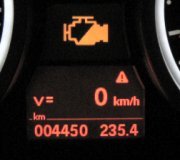When you said the fans run with the relay out, do you mean the terminals have a jumper wire in them? That would be necessary for the fan to run. You've already done more diagnosis than you realize. You now know the fan motor is ok, and you know the fuses and wiring are ok.
The fan circuit can be divided into four parts for testing and all of those tests can be done right at the relay socket. You've already confirmed two of those circuits are working by using the jumper wire. One terminal will have 12 volts all the time. That's the supply terminal for one of the relay contacts. We'll come back to him in a minute. A second terminal will have 12 volts when the ignition switch is turned to "run". That's the voltage supply for the coil inside the relay. It will be one of the two parallel terminals on either side of the relay. The other two circuits are the ground sides. One reads very low resistance through the fan motor to ground. That, along with the constant 12 supply are known to be working since the fan runs with a jumper wire. The last ground circuit is the other parallel terminal. It gets grounded by the Engine Computer to energize the relay's coil.
That last terminal is a little trickier to test. The easiest way is to insert a small piece of wire in the socket terminal that you can touch your voltmeter probe to, or you can try to lift the relay out enough to gain access to that terminal. With the ignition switch on, you should measure 12 volts on that terminal until it becomes grounded by the computer. That's when the relay should turn on and the fan should run.
The Engine Computer turns on either the low speed or high speed relay depending on coolant temperature and the high side pressure in the ac system when it is running. If neither circuit turns the fan on, suspect the computer. If the fan runs with the ac running, suspect the coolant temperature sensor.
Caradiodoc
Monday, June 28th, 2010 AT 3:22 AM



